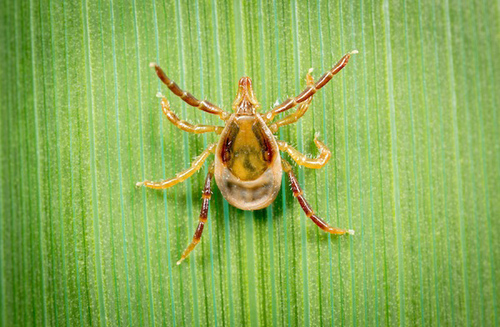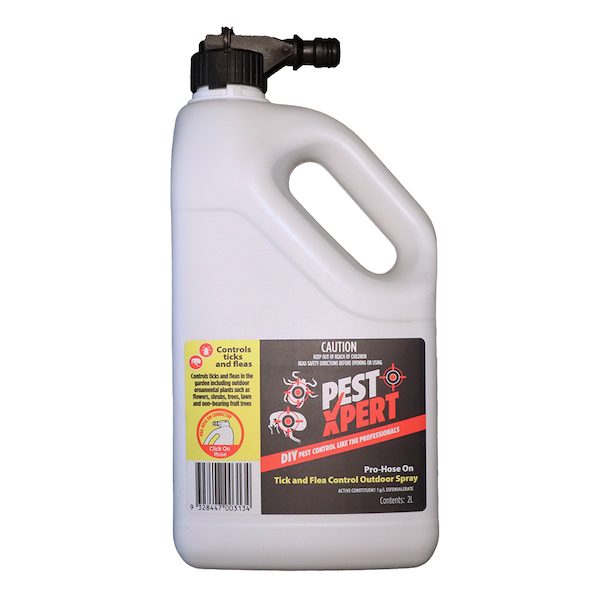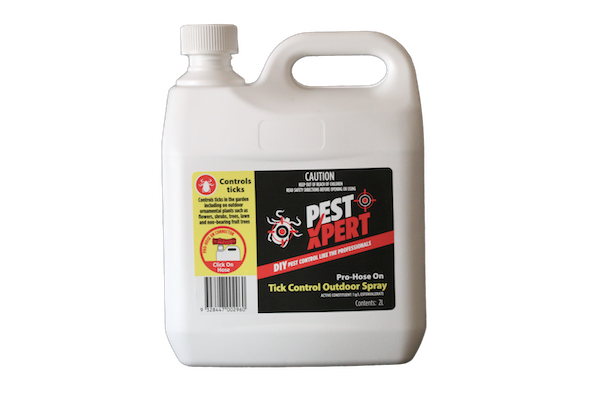How to control ticks
Most people don’t pay much attention to tick control. That tends to change when they find a tick on themselves after a bush walk or on their pet. 100% tick control cannot be guaranteed, but with some good tick prevention tips and use of suitable tick control products, the chances of picking up a tick on your property can be significantly reduced.
TICK IDENTIFICATION

FEMALE PARALYSIS TICK (NORMAL)

FEMALE PARALYSIS TICK ENGORGED (AFTER FEEDING)
WHAT DO TICKS LOOK LIKE?
There are a number of different tick species across Australia and they all have the same general appearance. Ticks are not insects and are actually members of the arachnids – so are more closely related to spiders than insects. As such the adults have eight legs, although interestingly the larval stage has 6 legs.
Eggs: The female lays up to several thousand eggs in leaf litter or attached to the bark or foliage of various plants. They are laid in batches of up to 200 per day.
Larvae: When the nymph hatches from the egg, it only has 6 legs. It develops the extra pair of legs after a blood meal, when it moults into the nymphal stage. The larvae are about 0.5mm in size and also called “grass ticks”.
Nymphs: Tick pass through 2 nymphal stages, getting progressively bigger. They require a blood meal each time prior to the moult to the next stage. Nymphs are about 1.2mm in size.
Adults: Adult female ticks can be up to 4mm long before feeding (males a little smaller). Female ticks seek out a blood meal, which is required before egg laying can commence. After the feeding the female is significantly engorged and can be up to 1cm long.
SIGNS OF AN INFESTATION
The only sign of an infestation is the presence of ticks on you or your pets. Perhaps the early sign you may have a problem developing on your property is if you are noticing “grass ticks” in Autumn and Winter, as this will mean you are likely to have a large number of adult ticks come Spring.
MAIN PEST SEASON
Tick season has various peaks corresponding to the life-cycle. For the paralysis tick, the tick larvae (“grass ticks”) are common in Autumn and Winter, whereas the adults are more common in Spring and Summer. All life stages need a blood meal, so it does mean you need to be on alert for ticks, year round.
TICK FACTS
Ticks species are found throughout Australia, but the paralysis tick is only found on the humid East coast in a strip spreading 20km inland. Paralysis ticks are restricted to this humid climate as the eggs struggle to survive dry periods.
All life-stages require a blood meal, although it does not have to be human. Ticks will latch onto any large animal walking by.
Ticks find suitable hosts be “questing”. They hold onto grass or small shrubs with the rear legs and wave the front pair of legs in the air. These legs have special organs which can detect odours, breathing, moisture and vibrations. When a suitable host brushes by they grab on with their front legs. (Ticks don’t jump or fall out of trees!).
Adult females require a blood meal to lay eggs. After laying eggs the female will die.
Adult males don’t often bite their host. They jump on the host primarily to find a female to mate with. If the male wants a feed, he will often bite the female to take some of her blood meal!
TICK PREVENTION TIPS
Keep grass short and cut back vegetation in areas used by humans and pets.
More tips to keep ticks out of the yard.
If you are walking in long grass / “the bush” wear long trousers tucked in and insect repellents.
Keep your pet tick treatments up to date.
TICK CONTROL TIPS
Around the backyard, vegetation management can be very helpful in keeping the tick numbers down. Cutting back vegetation and keeping grass short will make the environment less attractive for ticks – more sun and less humidity). Keeping native animals out of your yard can also help, especially if bandicoots are in your areas – good fencing, going below ground level, is required.
Target insecticide applications are an options as well, with the best control strategy being to apply insecticides in late summer / autumn when the larvae and nymphs are present, as these are easier to kill. They also reside in the leaf litter so it means you need to get the insecticide down to soil level. However, regular lawn treatments for ticks is the best way to ensure your yard is kept tick free.
PESTXPERT TICK PRODUCTS
Application of a regular tick treatment (such as PestXpert Pro Hose-On) to your lawn and garden will eliminate any ticks present, greatly reducing the chances of a tick bite. Pro-Hose On allows accurate application of the correct dose over a large area.




